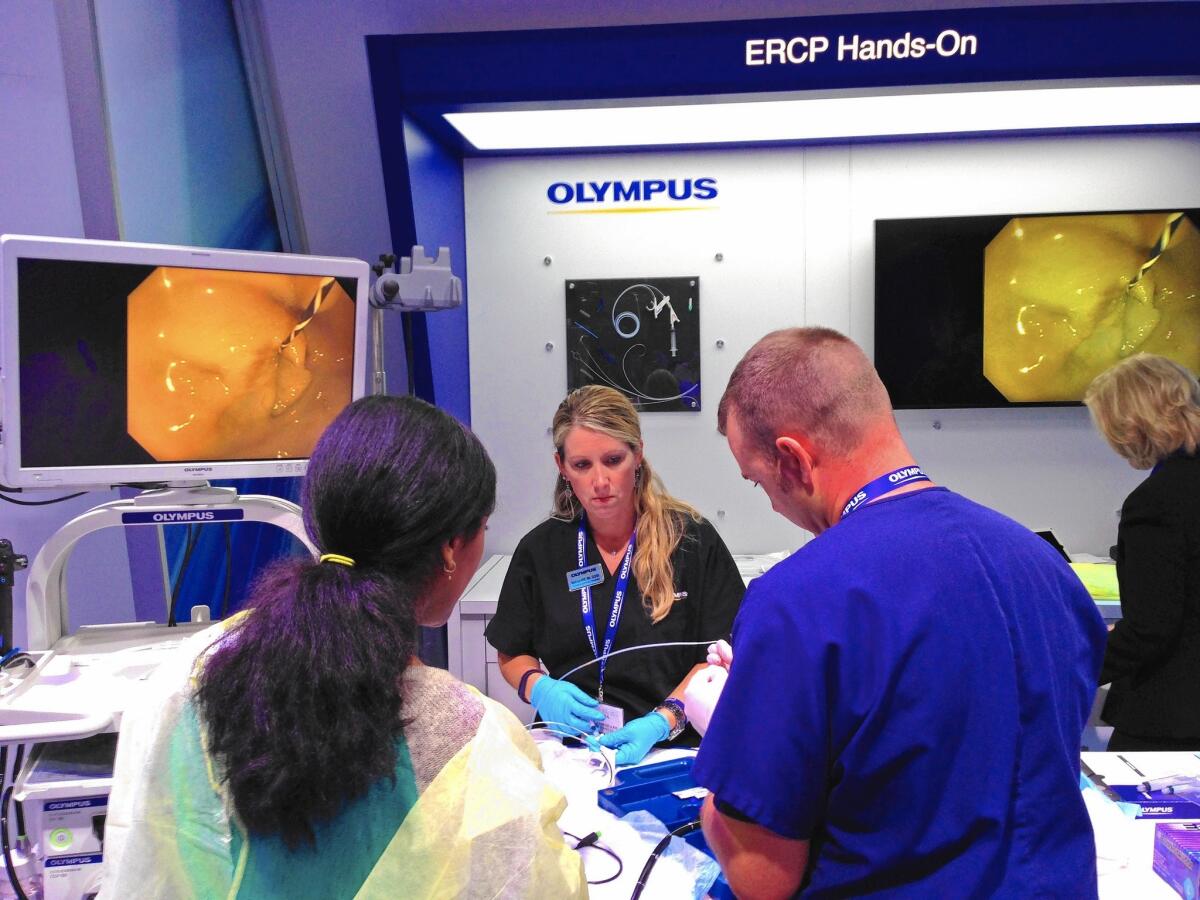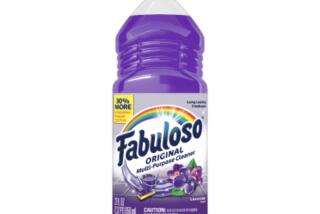Another scope, similar infection worries

- Share via
Long before the recent superbug outbreaks, Olympus Corp. drew national attention for a faulty device tied to patient infections.
In 2001, the Japanese company recalled thousands of bronchoscopes from U.S. hospitals after reports of contamination and patient infections. The episode — and the company’s response to it — mirrors its current troubles with gastrointestinal scopes.
Bacteria were trapped unexpectedly inside a loose biopsy port on the bronchoscope, and potentially dangerous bugs could be passed to the next patient. More recently, a similar pattern emerged with duodenoscopes harboring life-threatening superbugs even though hospitals followed Olympus’ cleaning instructions, federal regulators said.
Even after the 2001 recall, patients continued to get sick from tainted bronchoscopes because Olympus didn’t reach all of its customers in a timely manner, according to regulators and hospitals. The bronchoscopes are used to examine the throat, trachea and lungs in about 500,000 procedures a year in the U.S.
“The whole response by Olympus was slow and defensive,” said William Schaffner, professor of preventive medicine and an infectious disease expert at Vanderbilt University in Nashville.
He helped lead the outbreak investigation for the Tennessee Department of Health when some hospital patients in the state fell ill.
“Contaminated bronchoscopes were going into the bronchial tree of already sick patients. Olympus knows where each and every bronchoscope is, and they did not send the sales force out in an aggressive nature to contact each of the owners,” Schaffner said.
At the time, Olympus defended its recall notification to customers. The company said that it cooperated with health officials and hospitals, and that the recall was issued as soon as the biopsy port problem was identified.
Officials at Johns Hopkins Hospital in Baltimore said Olympus’ delayed response enabled continued outbreaks.
Dr. Trish Perl helped lead John Hopkins’ investigation, which determined that the loose biopsy port on the bronchoscopes had spread the bacteria to patients. In a 2002 letter to Olympus, an FDA official said there was “no information to indicate any irregularity” in the cleaning done by hospitals.
Doctors at Johns Hopkins published a 2003 study in the New England Journal of Medicine that called on device makers and regulators to make cleaning a priority when designing reusable instruments.
More than a decade later, some experts say, the recent outbreaks show that the warning wasn’t heeded.
“It’s clear the industry really hasn’t felt the need to respond,” said Perl, a senior epidemiologist. “Olympus didn’t agree with us, and it was extremely ugly.”
Cecil Young, a Memphis, Tenn., property appraiser, died in June 2001 after being treated with an Olympus bronchoscope that would be recalled later that year.
His widow, Julia Young, sued Olympus, alleging wrongful death and negligence. She said she rejected a six-figure settlement from Olympus because it included a nondisclosure agreement.
Ultimately, a judge dismissed Young’s lawsuit in 2012, in part because she had sued the U.S. unit of Olympus, which, the company successfully argued, handled sales and not scope design and manufacturing.
Laura Storms, vice president of regulatory and clinical affairs in the U.S. for Olympus, has said that hospitals are frequently at fault because they let scopes fall into disrepair, they don’t maintain their cleaning machines or staff members don’t follow proper procedures.
Young said Olympus’ response during the latest outbreaks reminds her of what happened during the bronchoscope infections.
“Blaming hospital staff has been Olympus’ mantra a long time — and it still works,” Young said.
Concerns about bronchoscopes haven’t gone away. The FDA issued an alert in September, citing more than 100 reports since 2010 concerning bronchoscope-related infections or tainted devices. A year ago, Olympus notified the FDA that one of its bronchoscopes had potentially infected 14 patients. The medical facility wasn’t named, and Olympus declined to comment on the report.
More to Read
Inside the business of entertainment
The Wide Shot brings you news, analysis and insights on everything from streaming wars to production — and what it all means for the future.
You may occasionally receive promotional content from the Los Angeles Times.











